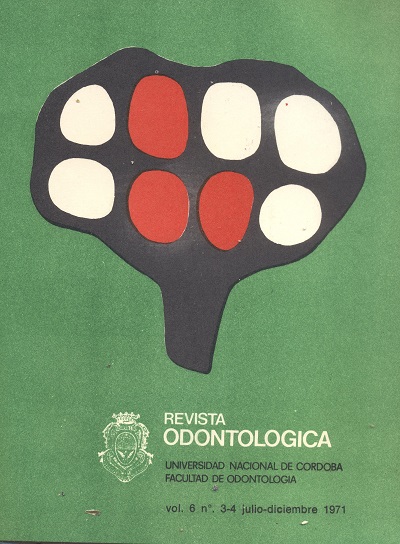Adaptación a las paredes cavitarias de acrílicos y."composities"
Keywords:
Dental Materials, Dental Cavity PreparationAbstract
In order to study the adaptationof t he cavity wall to acrylics and composites no grinding-ing nor trimming were carried out in 50 dental elements, gingival cavities, unnecesarily ground and filled, once the restauration material hardened, so as to avoid with it any mechanical or physical alteration of these materials and of the dental structure. For the filling, the conventional and the cotton pellet technics praised by Craig an modified by authors were used in orden to find out which of them produces the bcst cavitary adaptation. The elements filled were kept in Sél,lt solution at 379C and subjected to termic changes of heat and cold in order to resemble the conditions that these materials support in the mouth with the daily ingestion. The differences of adapté::tion were compared between the ac¡;,ylycs and composites with both technics. The adaptation was measured with an optical micrometer, using the lateral incidental light and reflexed in the gingival, axial and oclusal walls. The values were tabulet and subjeted to a statistical anlysis.
Downloads
Downloads
Issue
Section
License
Aquellos autores/as que tengan publicaciones con esta revista, aceptan los términos siguientes:
- Los autores/as conservarán sus derechos de autor y garantizarán a la revista el derecho de primera publicación de su obra, el cuál estará simultáneamente sujeto a la Licencia de reconocimiento de Creative Commons que permite a terceros:
- Compartir — copiar y redistribuir el material en cualquier medio o formato
- La licenciante no puede revocar estas libertades en tanto usted siga los términos de la licencia
- Los autores/as podrán adoptar otros acuerdos de licencia no exclusiva de distribución de la versión de la obra publicada (p. ej.: depositarla en un archivo telemático institucional o publicarla en un volumen monográfico) siempre que se indique la publicación inicial en esta revista.
- Se permite y recomienda a los autores/as difundir su obra a través de Internet (p. ej.: en archivos telemáticos institucionales o en su página web) después del su publicación en la revista, lo cual puede producir intercambios interesantes y aumentar las citas de la obra publicada. (Véase El efecto del acceso abierto).

